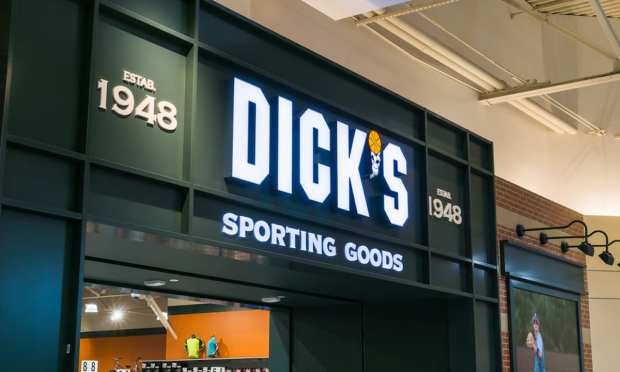DICK’S Sporting Goods Adds Stores Amid Surge In Home Gyms, Athleisure

The rise of “sweatpant nation” and other COVID-era lifestyle trends are prompting the country’s largest sporting goods retailer to expand its footprint. DICK’S Sporting Goods is doubling down on the omnichannel interdependence of its in-store and online businesses, and said it will add five new locations in five states this month, at a time when its digital sales have doubled.
In a company statement, DICK’S said it will open one traditional store in North Carolina, as well as four deep-discount “warehouse sale” locations in Texas, Florida, New York and Oklahoma, bringing its total store count to 728 locations in 47 states.
“Our tech investments in particular have allowed us to turbo-charge our omnichannel strategy — whether it’s in-store, curbside or online,” a spokesperson for DICK’S said in an email to PYMNTS. “We see our in-store and our online experience as one – our stores fulfilled 70 percent of our eCommerce orders in the third quarter,” she noted.
The Pittsburgh-based retailer’s expansion plans come at a time when many national chain stores are scaling back their portfolios, pulling out of malls or trying to find new ways of driving traffic to their brick-and-mortar locations to justify the expense. For DICK’S, however, that is not the case. “We believe our stores are hubs, critical to our business,” said Hoolahan, noting that the physical stores feed the digital business and the digital efforts support the stores.
Winners and Losers
To be sure, the pandemic has caused its share of winners and losers within the sporting goods industry, as many traditionally popular indoor sports have faced widespread cancellations or restrictions. At the same time, COVID-era lifestyle changes are benefiting other segments within the sector, as the increased numbers of people who are working from home have been paired with a surge in demand for apparel like sweatshirts, yoga pants, running shoes and casual shirts.
“Athleisure is highly competitive, therefore sporting goods [retailers] need a clear value proposition and focus on material innovation, design innovation and leveraging of sports DNA,” Aimee Arana, Adidas’ senior vice president and general manager of global product, said in a new industry analysis prepared by McKinsey & Co.
In addition, the closure of traditional gyms, combined with an increasingly homebound consumer base, has triggered a surge in demand for items like exercise bikes, treadmills and weights, as well as interactive fitness products, such as Peloton.
Cooped-Up Consumers
As much as people are adapting to their cooped-up COVID existences, they are also reacting to this forced increase in indoor time by trying to get outdoors as much as possible. As a result, items like bicycles, hiking boots and yard games such as badminton have been hard to keep in stock. In fact, the McKinsey survey showed that 84 percent of respondents said they expected to increase their participation in outdoor individual sports this year — the highest increase of a dozen different activities.
“COVID-19 has triggered significant shifts in physical activity levels. Around 40 percent of people are less active, while around 30 percent are more active,” McKinsey said, noting the opportunity — and the challenge — that the sporting goods industry faces in shrinking the so-called “activity gap” that is especially pronounced between affluent and lower-income households.
The coronavirus has also spurred the embrace of things like curbside pickup and buy online, pick up in-store (BOPIS), which have become eCommerce standards for many consumers, and which DICK’S believes will outlast the pandemic.
Still, the company spokesperson said, the hands-on, experiential nature of stores is here to stay. “Customers want to touch and feel our products — they want to swing a golf club, try on a new baseball glove or find the right running shoe fit — and they can do that by coming into our stores,” she said.
New Leadership
The changes currently taking place at DICK’S are happening on the watch of CEO Lauren Hobart, who took over the helm of day-to-day management duties on Feb. 1 from Edward Stack, who had led the company since 1984 after buying two sporting goods shops from his father. “I am fortunate to have Ed as a mentor and look forward to leading the company into this next phase of growth with Ed and our senior management team,” Hobart said.
As of last check in November, DICK’S reported record-setting same-store sales growth of 23 percent, led by a 95 percent annual increase in its eCommerce business. The company is set to deliver its fourth-quarter earnings on March 9.
